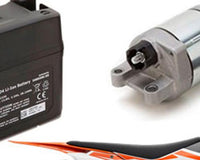What if we told you don’t need to splash out on a fancy Tesla Powerwall or large industrial-scale battery to get more power for a single application?
That’s right, all you need is to build your own battery bank! But don't be misled by the term; a battery bank isn’t some kind of financial branch teeming with SSB Drycells. Rather, it's a series of two or more batteries connected to enhance the power output of one application.
For instance, if you have a solar power system, you can link it to several batteries, creating a robust battery pack that will provide you with more energy for extended periods. The type of DIY power bank you build can be tailored to your needs and helps cut maintenance cost significantly.
Connecting Batteries for Increased Power
Series
By connecting batteries in series, you essentially add the voltage of the batteries while maintaining the same ampere-hour (Ah) capacity. For example, if you’re using two 6V batteries at 10 Ah each, connecting them in series will result in a 12V battery pack but maintain the total capacity at 10 Ah.

To achieve this setup:
-
Use jumper cables to connect the negative (-) terminal of Battery No. 1 to the positive (+) terminal of Battery No. 2.
-
It’s crucial to ensure that your batteries have the same voltage and capacity rating; otherwise, it may cause issues like charging problems and shortened battery life.
Parallel
This setup is more or less the opposite of connecting batteries in series. Connecting batteries in parallel will increase your current (capacity in Ah) but maintain the voltage. Using the same two 6V batteries at 10Ah each in parallel gives you the same 6V output but increases the capacity to 20Ah. This method may require a heavy-duty cable since the higher amperage could burn out a regular cable.

To connect batteries in parallel:
-
Use two jumper cables: one to connect all positive terminals and one for all negative terminals.
-
Ideally, you should connect your load to the battery pack by attaching to the positive at one end and the negative at the other end of the battery pack.
Series, Parallel? Why not both?
Combining both series and parallel connections allows you to expand both voltage and capacity. This hybrid setup, known as a series-parallel connection, requires a minimum of four batteries.
Basically, one pack of batteries that are connected via series is joined in parallel with another pack of batteries connected via series. As a result, the overall output voltage of series packs remains the same. But charge storage capacity is increased.
Technically, you can connect as many batteries as you want, but it can get messy and confusing. It's best to keep in mind what your application requires and use batteries of the same capabilities. It is also important that you avoid mixing battery sizes.

Practical Applications and Safety
When constructing your battery pack, it’s imperative to prioritize safety. Always use batteries of the same type and capacity to prevent imbalances that can lead to premature battery failure. Additionally, ensure your DIY power solutions are housed in a non-conductive enclosure to protect against electrical shorts.
Thanks for reading, if you have any questions, feel free to leave a comment. Make sure you stay keep coming back for more blog content including, battery tips, advice, and updates.









